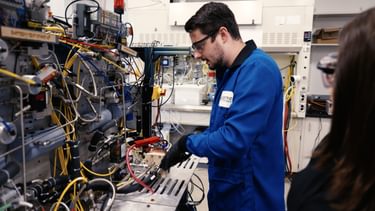
Incrementalism and Pragmatism: Reflections from CERAWeek 2025

Two dominant themes coming out of CERAWeek 2025 were incrementalism and pragmatism, underscoring our belief that the energy transition is not about abrupt overhauls but rather a measured, market-driven evolution. This shift was evident throughout the Agora Innovation discussions, where energy leaders, investors, and policymakers converged to discuss how incremental clean tech adoption, efficiency-focused innovation, and hybrid energy models are shaping the future of energy markets.
The Case for Incrementalism
The prevailing sentiment at this year’s conference reflected a significant departure from the disruption narrative that dominated the early 2020s. Recognizing that energy system transformation is a long-term process that will take decades, discussions centered on how new technologies can integrate seamlessly within existing infrastructure to make consistent advances, as opposed to advocating for sweeping changes. Investors we spoke with at Agora acknowledged that while hard tech remains crucial for the energy transition, the solutions that gain traction today are those that enhance efficiency and reliability without requiring massive capital outlays or infrastructure overhauls, helping to ensure that affordability is also achieved.
In our view, continuous incremental improvements are the key drivers of progress. By deploying technologies that optimize existing energy systems, the industry can reduce emissions, improve asset utilization, and enhance system reliability — all while maintaining financial discipline. This year, it was clear that market pragmatism is back in focus, with energy companies and investors alike prioritizing efficiency, measured investments, and scalable innovations.
Incrementalism in Action
At S2G, we see incrementalism and enabling technologies as a powerful tool for accelerating the energy transition while meeting the needs of today’s markets. Several of our portfolio companies that were on-site at CERAWeek exemplify this approach.

LineVision
LineVision is pioneering grid-enhancing technologies that unlock latent capacity in existing transmission infrastructure. By using advanced sensors and analytics, LineVision helps utilities optimize power flow, increase transmission efficiency, and mitigate congestion — all without requiring costly new transmission lines. This enables utilities to meet growing energy demands without waiting for lengthy permitting and construction timelines associated with new infrastructure development.

Urbint
Urbint is leveraging AI-driven risk mitigation to enhance energy infrastructure safety and reliability. Its predictive analytics platform enables utilities to identify potential risks before they become costly failures, allowing for smarter asset management and reduced operational downtime. By improving hazard detection and decision-making processes, Urbint helps energy companies prevent service disruptions and enhance resilience against extreme weather events.

Electric Hydrogen
Electric Hydrogen is pushing the boundaries of electrolyzer efficiency, making green hydrogen production more viable within existing industrial and energy systems. By optimizing electrolyzer design and manufacturing, Electric Hydrogen is enabling industries to integrate hydrogen into their operations without disruptive infrastructure overhauls. This approach lowers the cost of green hydrogen, making it more competitive with traditional energy sources and accelerating adoption across hard-to-abate sectors.
Capital Discipline and Efficiency as Investment Priorities
Unlike prior years of increased climate-driven investment following the Inflation Reduction Act (IRA), 2025 has seen a renewed emphasis on market discipline. Investors and corporations alike are prioritizing solutions that optimize transmission, improve interconnection, and enable distributed energy integration — key areas where capital is flowing due to persistent infrastructure constraints.
The Path Forward
Energy companies are refocusing on profitability, asset utilization, and efficiency-first strategies to drive measurable emissions reductions. Despite this shift in focus, it’s our view that renewable generation will continue to proliferate globally at various scales, playing a critical role in the diverse energy generation mix required to satisfy growing demand. We believe technologies that work with the existing energy systems to be more efficient and those that accelerate the deployment of various renewable sources will be in demand both from an investment and deployment perspective.
CERAWeek 2025 reinforced that the energy transition is not a binary shift but a continuous journey shaped by pragmatic, incremental advances. At S2G, we remain committed to investing in scalable, efficiency-enhancing solutions that align with market realities while accelerating the path to a lower-carbon future. By focusing on innovation that integrates within existing systems, we believe we can drive meaningful change while ensuring resilience, reliability, and economic viability in the evolving energy landscape.
Photo credits: Amol Mande via Pexels, LineVision, Urbint, S2G.

